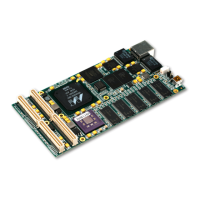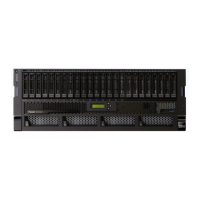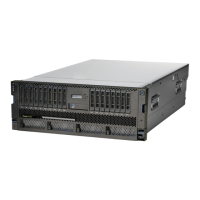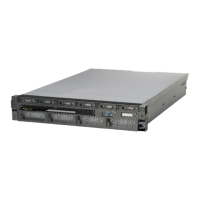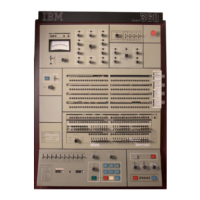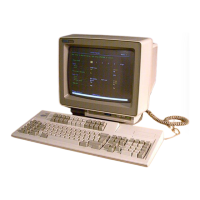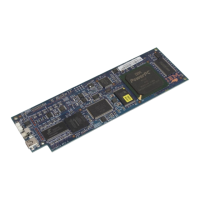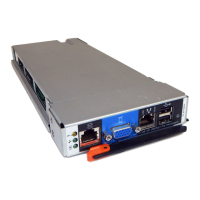10.6 Interrupt Handling
in
the Processor Core
An interrupt is the action
in
which the processor saves its old context (MSR and instruction pointer)
and begins execution at a pre-determined interrupt-handler address, with a modified
MSR.
Exceptions are events which, if enabled, cause the processor to take an interrupt. Exceptions are
generated by
signals from internal and external peripherals, instructions, internal timer facilities,
debug events,
or
error conditions.
Table 10-4, "Interrupt Vector Offsets," on page 10-27, lists the interrupts handled by the PPC405GP
in
the order of interrupt vector offsets. Detailed descriptions of each interrupt follow,
in
the same order.
Table 10-4 also provides an index to the descriptions.
Several registers support interrupt handling and control. "General Interrupt Handling Registers" on
page
10-27 describes the general interrupt handling registers:
• Data Exception Address Register (DEAR)
• Exception Syndrome Register (ESR)
•
Exception Vector Prefix Register (EVPR)
•
Machine State Register (MSR)
•
Save/Restore Registers (SRRO-SRR3)
10.7 Architectural Definitions and Behavior
Precise interrupts are those for which the instruction pointer saved by the interrupt must be either the
address of the excepting instruction
or
the address of the next sequential instruction. Imprecise
interrupts are those for which it is possible (but not required) for the saved instruction pointer to be
something
else, possibly prohibiting guaranteed software recovery.
Note that
"precise" and "imprecise" are defined assuming that the interrupts are unmasked (enabled
to occur) when the associated exception occurs. Consider an exception that would cause a precise
interrupt, if the interrupt was
enabled at the time of the exception, but that occurs while the interrupt is
masked.
Some exceptions of this type can cause the interrupt to occur later, immediately upon its
enabling.
In
such a case, the interrupt is not considered preCise with respect to the enabling
instruction, but imprecise ("delayed precise") with respect to the cause of the exception.
Asynchronous interrupts are caused by events which are independent of instruction execution. All
asynchronous interrupts are precise, and the following rules apply:
1. All instructions prior to the one whose address is reported to the interrupt handling routine (in the
save/restore register) have
completed execution. However, some storage accesses generated by
these preceding instructions may not have
completed.
2.
No subsequent instruction has begun execution, including the instruction whose address is
reported to the interrupt
handling routine.
3. The instruction having its address reported to the interrupt
handler may appear not to have begun
execution,
or
may have partially completed.
Synchronous interrupts are caused directly by the execution (or attempted execution) of instructions.
Synchronous interrupts can be either precise
or
impreCise.
10-22
PPC405GP User's Manual
Preliminary
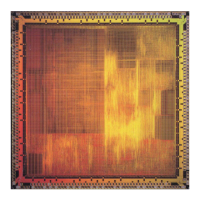
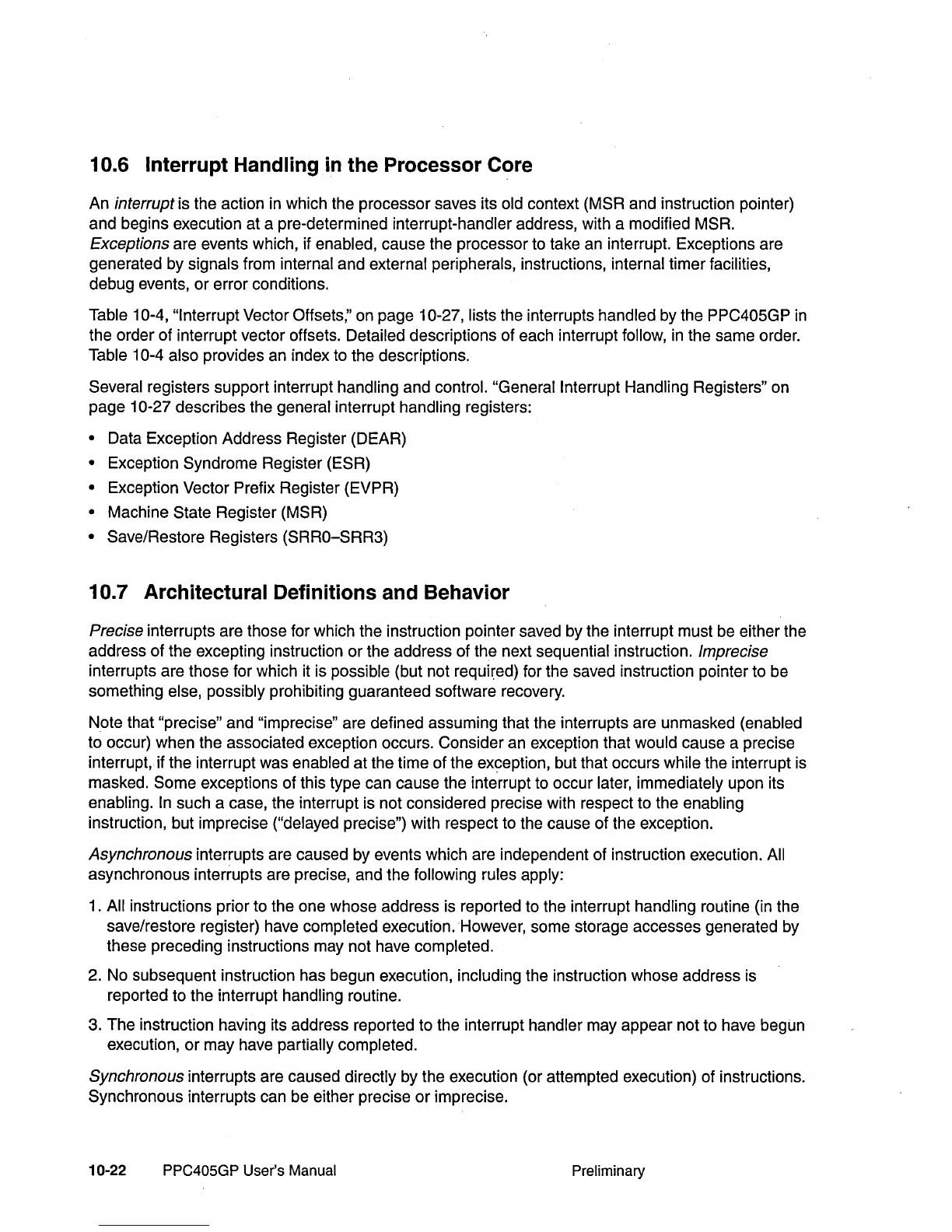